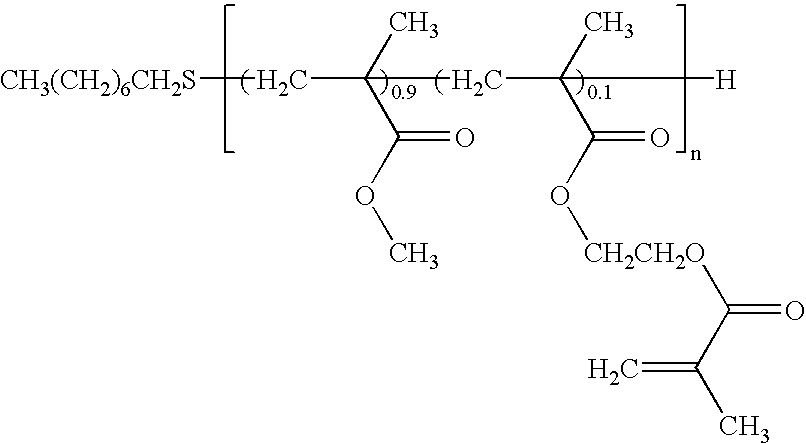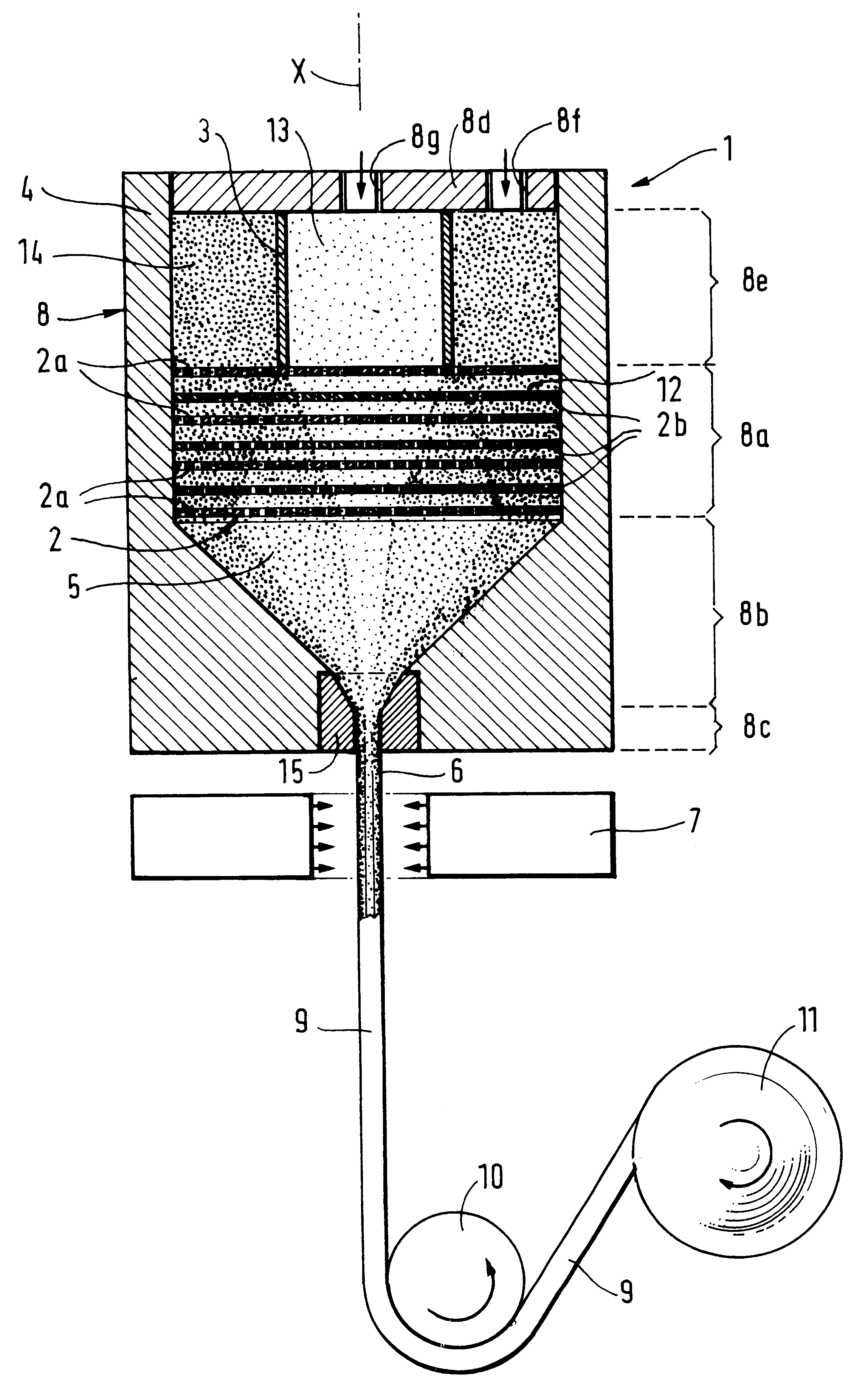Method of manufacturing a graded-index plastics optical fiber
a technology of plastics and optical fibers, applied in the field of manufacturing a can solve the problems of difficult manufacturing of such plastics optical fibers, slow and not very reproducible methods, and the inability to manufacture graded index plastics optical fibers
- Summary
- Abstract
- Description
- Claims
- Application Information
AI Technical Summary
Benefits of technology
Problems solved by technology
Method used
Image
Examples
second embodiment
In a second embodiment, the static mixer 1' does not comprise a set 2 of plates (2a, 2b) like the mixer 1 of FIG. 1, but instead comprises a set 16 of fixed baffles represented by symbolic cross-shapes in FIG. 4. These baffles are zigzag passages which the compositions 13 and 14 are constrained to follow, thereby achieving progressive mixing 5'. The shape and size of the set 16 of baffles leads directly to the index profile of a graded-index plastics optical fiber 6' as obtained in this way. The profile is of the same type as that shown in FIG. 3.
third embodiment
In a third embodiment, the static mixer 1" does not have a set 2 of plates (2a, 2b) of the mixer 1 of FIG. 1, but instead has a cartridge 17 of beads 18, as shown in FIG. 5. The resulting mixture is referenced 5". The beads 18 can all be identical in diameter, as shown in FIG. 5, or they can be of different diameters either individually or in groups as compared with adjacent individual beads or groups of beads. Under such circumstances, the gradient of the mixture 5" obtained in this way depends on the diameter and the disposition of the beads 18 within the cartridge 17. A graded-index plastics optical fiber 6" is thus obtained which is photo-cured by the source 7 so as to become a polymerized optical fiber 9". The profiles of the plastics optical fibers 6" and 9" are of the same type as that shown in FIG. 3.
FIG. 6 is a highly diagrammatic section view on a plane containing a central axis X of a dynamic mixer 24. Mixing 5" is provided by mixing means 26 comprising a solid shaft 19 o...
example 1
Manufacturing a Reactive Polymer of the Poly (.alpha. fluoro) (meth)acrylate type.
A photoreactive polymer (P1) is made having the following formula: ##STR1##
where GRET represents the photo-curable group:
--CH.sub.2 --CH(OH)--CH.sub.2 --O--CO--C(CH.sub.3).dbd.CH.sub.2
and where Rf represents the CH(CF.sub.3).sub.2 group which serves to adjust refractive index.
This is done initially by synthesizing a precursor polymer, and then by introducing the photoreactive groups on the precursor polymer.
To synthesize the precursor polymer, the following raw materials were used: two monomers, hexafluoroisopropyl .alpha.,.beta.-difluoroacrylate and acrylic .alpha.-trifluoromethyl acid, the transfer agent being thioglycolic acid and the initiator being 4,4'-azobis (4-cyano) pentanoic acid (ACPA) with quantities of 1 mole of transfer agent per 20 moles of monomer and 0.2 moles of initiator per 20 moles of monomer. Copolymerization was triggered thermally at a temperature of about 60.degree. C. In a var...
PUM
| Property | Measurement | Unit |
|---|---|---|
| Time | aaaaa | aaaaa |
| Time | aaaaa | aaaaa |
| Viscosity | aaaaa | aaaaa |
Abstract
Description
Claims
Application Information
 Login to View More
Login to View More - R&D
- Intellectual Property
- Life Sciences
- Materials
- Tech Scout
- Unparalleled Data Quality
- Higher Quality Content
- 60% Fewer Hallucinations
Browse by: Latest US Patents, China's latest patents, Technical Efficacy Thesaurus, Application Domain, Technology Topic, Popular Technical Reports.
© 2025 PatSnap. All rights reserved.Legal|Privacy policy|Modern Slavery Act Transparency Statement|Sitemap|About US| Contact US: help@patsnap.com



